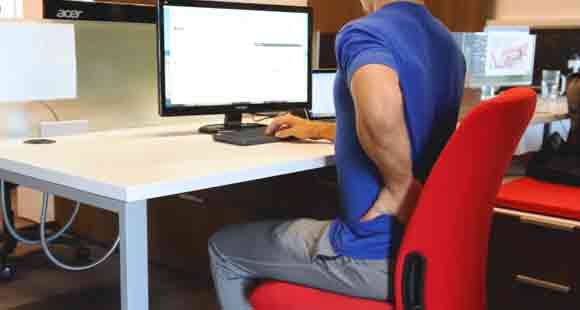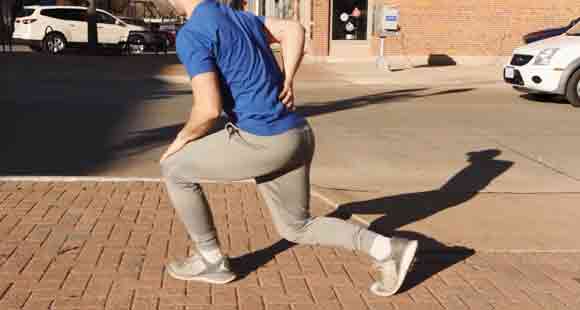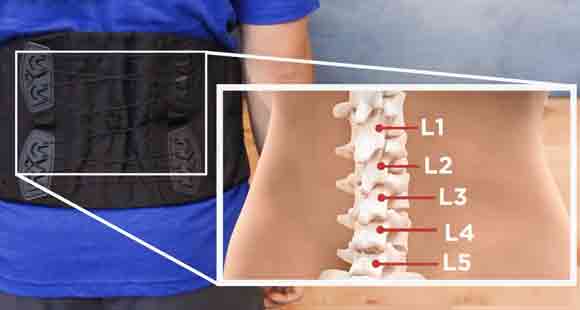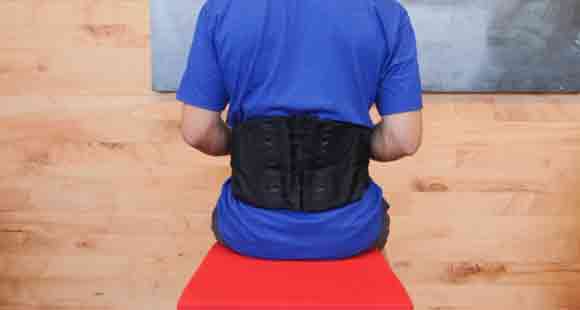How to Wear a Back Brace for Lower Back Pain : Simple Guide
Back pain is a common, chronic health problem. It can start out as an occasional irritation and then become a constant part of your life if left untreated.
There are many ways to manage back pain without having to live with it every day. Wear a back brace for back trouble is one way you can help prevent yourself from getting hurt in the first place.
You should wear your brace before any physical activity like lifting or bending over so that you don't strain anything while performing these routine tasks that are part of your daily life.
What Causes Lower Back Pain?

The causes of back suffering are many. They include a minor misalignment, muscle strain, ligament/spinal cord problems, degenerative disc disease, and spinal stenosis. In some cases, the pain starts suddenly without an apparent cause.
Lower back pain can also be caused by inflammatory conditions like arthritis and gout or degenerative diseases such as scoliosis and osteoporosis.
Wearing a back brace apparatus as set for back suffering can help prevent these conditions from degenerating into a more serious problem.
How to Wear a Back Brace?
Having this extra support will allow you to work through the discomfort rather than turning around after just two minutes because the pain has become too much for you to handle on your own! To wear a back brace:
i) Put the brace on the front of your chest rather than in the back. The strap should be in front of you and not behind your neck.
ii) Wrap the bottom straps around your hips so that they are snug but not too tight. If you wrap them too tightly, you may experience skin irritation because it restricts blood flow to the skin.
iii) Wrap the top straps around your chest so that they are snug but not too tight. You should be able to place two fingers between your chest and the strap without any pressure points on you or pain in your shoulders from constriction."
iv) Adjust the Velcro straps so that they are snug but not too tight. The tighter you wrap them, the more support you will get from your back brace.
v) Place the back brace between your shirt and your skin so that it provides you with more support.
vi) Don't cover your shirt with this brace because it will irritate your skin and may even leave marks on your body during use.
vii) Don't wear more layers than what comes with this brace so that it provides the necessary support to your lower back and promotes circulation as well.
viii) Wear the brace as directed based on the severity of your lower pain rather than for an extended period of time.
ix) Wear this in front of you rather than from the back so it provides more support for your lower back and doesn't rip or tear because of pressure points on your skin.
x) Do not take a back brace if you are expecting an MRI scan because they can damage the machine and injure yourself.
The Symptoms of Lower Back Pain

In the first few days or weeks following the injury, you might experience some low back pains that feels like an ache or nagging sensation most often experienced on one side of your body.
It may be precipitated by prolonged standing or sitting, bending over forward (or backward), lifting heavy weights, twisting at the waist or spine.
There may also be numbness and tingling sensations in the area of your buttocks or legs. Your suffering may worsen as you move around, even when you're not doing anything exertive.
You might experience sudden shooting pains in your lower back after lifting something heavy or rotating it to one side, bending down over the sink, or squatting to pick up an item on the floor. Your back can also feel "locked" or stiff.
The frequency of lower back suffering is another indicator of its severity. When the suffering only occurs periodically, it may be due to an ongoing problem and not something separate like a muscle spasm or strain.
Why Are You Choosing a Brace for Back Pain?
A brace is an easier way to prevent them from hurting themselves than seeing a doctor if they just show the initial symptoms.
To Provide Additional Spinal Support
It provides the support that is needed for those people who are experiencing back problems.
If you experience back suffering, you can prevent yourself from getting hurt by wearing a brace before physical activity.
They can actually wear it on their own after seeing how to put it on with some tutorials on the internet or cartoons. They don't need to ask other people to put it on for them.
Ensure That Spinal Structures are Not Compressed

There is less pressure on the spinal structures and discs when using a back brace for back trouble.
They will require less time to recover if they wear a brace as prescribed by their doctor.
A checkup with a specialist like a chiropractor or an orthopedist can help them in being able to wear it on their own.
While Healing, Reduce The Range of Motion
Dealing with back pains relief during healing requires limiting the range of motion. This is done by wear a brace and not overexerting oneself.
The goal of the back braces is to limit strain on the joints in order to heal faster.
Minimize Micromotion Between Vertebral Segments
If you have back pains it's important to reduce motion at the vertebral segments. This can be done through the use of a back braces for back pains.
Wearing a brace for lower pain relief will protect the vertebras from excessive micro motion.
What Types of Braces are Available for Back Pain?
A back braces for back pains can be found in many shapes, sizes, and colors. Different materials are also used to create a brace like plastic, latex, rubber, and neoprene foam.
There are many types of back braces available. Some are for people who want support, but not a lot of restriction. This type is perfect for those who can't sit in one place for a long time and need to move around but still need back support.
Other types of back braces are for people who have had an injury and will help them heal. They tend to be more restrictive than the other, but they work well for those who just need stability and stabilization during that transitional period from injury to complete healing.
Benefits of Using a Brace to Treat Lower Back Pain
There are many benefits of wear a brace to treat lower back pain relief.
A major benefit of using a back brace is that it can prevent you from straining your back and injuring yourself while performing routine, everyday tasks.
For example, if you have back pains on the right side of your body, you may lean over to pick up something off the ground or bend down to put away laundry and strain your low back muscles.
Wearing a brace will give you extra support so that you can continue with these tasks without getting hurt.
Another advantage of using lower back braces for back pains is that it can provide pain relief for those who suffer from chronic back pain problems.
If the pains becomes steady over time or starts to increase in intensity, you should get it checked out by a doctor to see what the underlying cause of your back pain is.
A doctor or physiotherapist will be able to advise you on exercises and may even recommend wear a brace as part of your treatment plan for back pain relief.
Using a back brace for pain can also improve posture. If you have a bad posture, the muscles in your back become overworked and this can lead to poor blood circulation and pain. Wear a brace every day to prevent this from occurring.
Tips for Wearing a Brace Safely

It is a good idea to make sure that the back brace you are wearing is fitted for you. You may need to adjust the straps of the back brace for extra support if it seems too loose or too tight.
Another tip is to ensure that your brace can be pulled up as far as possible without pinching your neck so that it will provide maximum support.
If your brace has a hinge in it, then you should be careful not to bend over when you have it on.
Wearing a brace to reduce back pain relief can lead to injury if you bend over while wear one.
FAQs
1. When Should a Back Brace Be Considered?
A back brace for reducing pain can be used any time you are at risk of straining your back, such as bending or lifting.
If you have a job that requires heavy lifting or twisting while standing, you may want to consider wearing a brace while working.
2. Are There Risks Associated with Using a Back Brace?
Yes. Wearing a back braces to decrease pain should be done under the supervision of a doctor, or otherwise should be used as directed by your healthcare provider.
The reason is that wearing a support brace can cause more harm than good if it's not properly fitted.
If worn correctly, your brace will provide support to areas that are weakened and vulnerable to injury if you continue doing activities without it.
If the brace is not fitted properly, there are many risks such as worsening pain or causing injuries over time that may lead to more serious problems than lower back brace for pains.
3. Is a Back Brace Covered By Medicare?
Medicare doesn't cover the cost of a lower back brace for pains. Although Medicare won't pay for back braces, it does offer coverage for diagnostic tests and treatments related to reducing suffering.
A doctor can prescribe you certain medications and physical therapy to treat your condition if deemed necessary by the physician to improve your quality of life.
If you have Medicare insurance or are looking into coverage, talk with an agent who knows the ins and outs of Medicare claims before you make any purchases.
4. For How Long Should You Wearing a Back Brace?
There is no specific time frame for wearing a brace for support. It really depends on how you feel when you take your back brace off.
If it feels very tight and uncomfortable, then it's best to wear the back brace as much as possible.
On the other hand, if you feel some discomfort wearing a brace, then minimize its use again until you feel you can wear it more comfortably.
5. When Should You Take Off Your Back Brace?
It's best that you take off the back brace whenever possible, especially when you are at work or resting on a bed.
If you have to stand for an extended period of support time, then use the back brace so as not to strain yourself. But always remember to take off the back brace before doing any form of physical activity like lifting or bending.
If you are taking pain medication, then it is also best that you take off your back brace may support so that you can maximize the effect of your pain medication.
6. Is It Necessary To Clean The Brace?
It is a good idea to wash the back brace every now and then in order to keep it clean. Just be sure not to expose it in extreme hot or cold conditions because these can affect its structure.
The best thing you can do is wipe your back brace with a damp cloth, especially after you have worn it for long hours. This way you can clean your back brace while keeping it in its original form.
7. How Do I Choose The Right Back Brace For Me?
You should choose your back brace depending on what you need it for.
If you want to wear a back brace as an added form of support while doing your daily routine, then you can just use one with no shoulder straps and elastic that will give more freedom than braces with shoulder straps.
Conclusion
It helps prevent any further damage that might occur in the spinal region when you are just doing some routine activities like lifting or bending over. It does not only support you from getting hurt but also protects your back.
If you’ve been considering wearing a back brace, but are unsure about how to wear one or which type is best for your needs, this article should have cleared up any confusion. Remember: prevention is always better than treatment!
